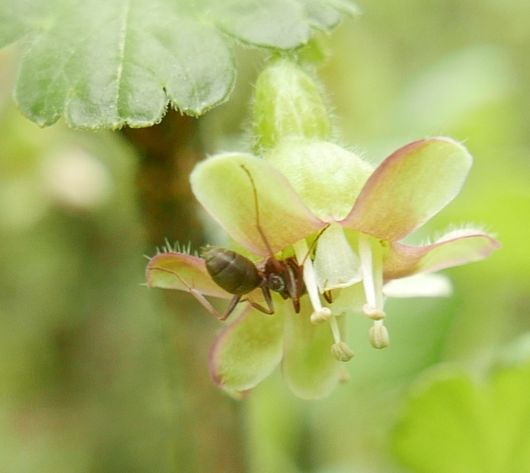New nationwide project on plant species conservation in Austrian Botanical Gardens
Loss of biodiversity at all levels – taxonomic, genetic and community diversity, and its holistic effects on the functionality of ecosystems is one of the essential threats we face.
Botanical gardens successfully implementing in-situ and ex-situ conservation measures try to counteract this trend. A current project is a collaboration between the botanical gardens of the University of Innsbruck, the Carinthian State Museum, the Paris Lodron University of Salzburg, the BOKU University and the University of Vienna and aims to protect endangered plant species by means of cultivation and re-establishment. After selecting the target species based on the criterion of endangerment (RL category: Critically Endangered CR, Endangered EN, Vulnerable VU and Early Warning Level NT) and selecting target areas for reintroduction, the seeds of the target species are collected in accordance with ENSCONET guidelines. Conservation and reproduction cultures of these species are established in the participating institutions. Reintroduction will take place after one to two years by sowing or planting young plants. Monitoring of the areas will continue beyond the project period in order to document long-term establishment.
The information obtained on cultivation requirements and reintroduction successes will be entered into the publicly accessible database of the Conservation Working Group of the Verband Botanische Gärten. The transfer of knowledge is coordinated centrally and presented to the public via guided tours, exhibitions and social media. The project team has a wealth of experience to draw on for the successful realization of the project.
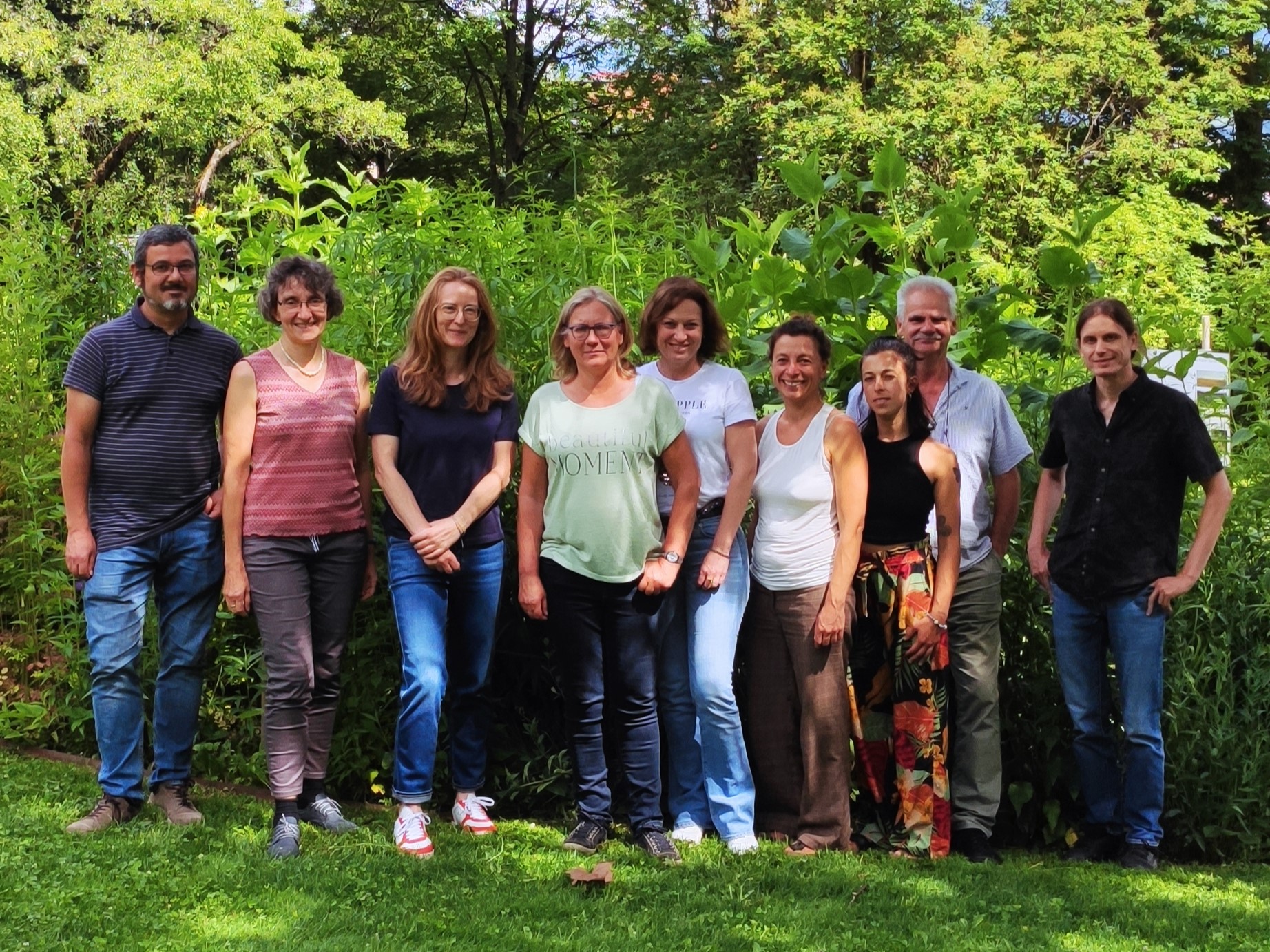
Partners:
Botanical Garden of the University of Innsbruck
Botanical Garden in Klagenfurt
Botanical Garden of the University of Salzburg
Botanical Garden of the BOKU University
Botanical Garden of the University of Vienna
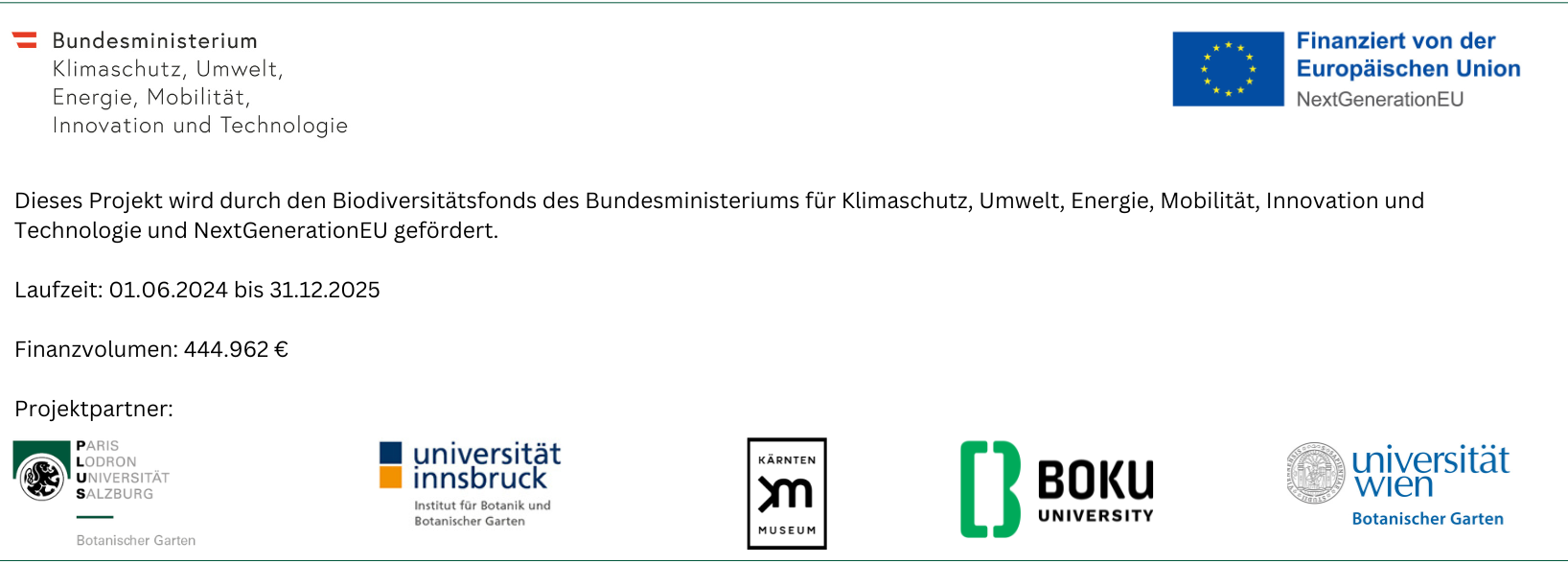
The Botanical Garden of the University Salzburg is not only a habitat for many different plant species but also a showcase for research. In spring 2017, a very interesting Bachelor Thesis took place in the berry garden. Nina Haas from the study group of Univ.-Prof. Dr. Stefan Dötterl, Department of Biosciences, studied the reproductive biology of the black currants (Ribes nigrum L.) and gooseberries (Ribes uva-crispa L.). She observed the flower visitors and examined the impact of these insects on the fruit set of the plants. Moreover she discovered the scents’ compounds of the flowers and found out which of these compounds are detected by the visitors.
The following questions were addressed:
Do flower visitors have an impact on the fruit set of gooseberries or black currants?
The results of this fascinating project showed that gooseberries are insect-pollinated. They can also self-pollinate, however very insufficiently. The black currants are efficient self-pollinators, albeit the flower visitors improve the fruit set significantly. To measure the effect of the flower visitors on the fruit set, an exclusion experiment was performed. For this experiment some branches of each individual plant were wrapped into a sheer curtain to avoid insects getting in contact with the flowers before the buds bursted open. At the time the fertilized ovaries started to thicken, the fruit set was calculated from both, the open and the wrapped branches.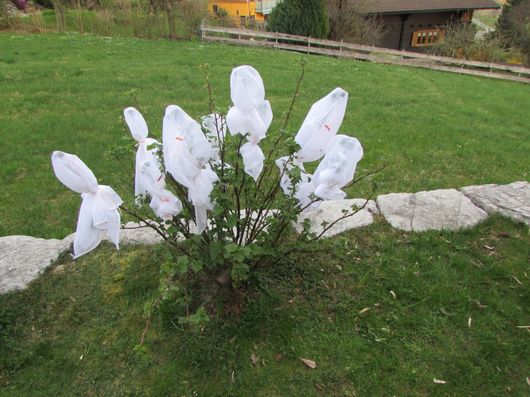
What are the compounds of floral scent in goosebeeries and black currant and which if them can be detected by visiting inscets?
The scent detection discovered around 20 compounds in the gooseberry scent. The main compounds are Methyleugenol, Linalool oxide furanoid, Methylbutanol, Heptane and an unknown substance.
The black currant scent contains around 40 compounds and many of them are very strong. The main compounds are Arbusculone, Linalool oxide furanoid, Linalool, Lilac aldehyde, Linalool oxide pyranoid, Lilac alcohol, Linalyl acetate, Geranyl acetate and some unknown substances. Most of the components could be detected by the tested visitors. There were only a few differences between the honeybee and different bumblebee species. For the discovery of the scent compounds, the scent was collected using a very specific method. For each sample a twig was bagged with a plastic oven bag to accumulate the volatiles. Following that, the air within the oven bags was drawn through a filter by a small pump. Next, the obtained volatiles in the filter were analysed using gas chromatography.
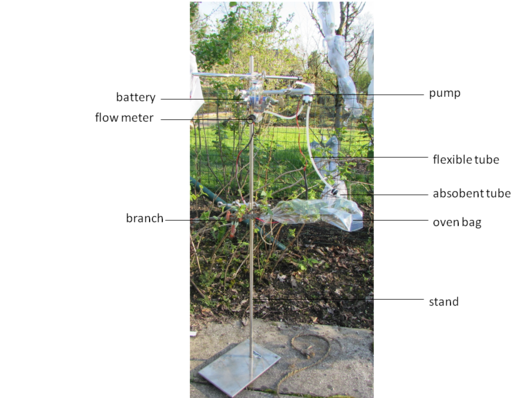
To find out whichh of these compounds can be detected by the insects, electrophysiological measurements were performed.
For this analysis an insects antennae was arranged between two electrodes. Then the scent compounds were blown onto the antennae and the electric signals of the antennae were measured. 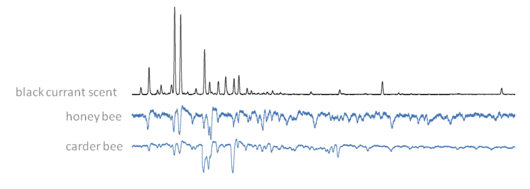
The components of the black currant scent are visible as peaks of the black graph. The electric signals of the insect antennae to the individual components are visible in the two blue graphs below.
With all these interesting findings we made progress in understanding the arthropod-plant interactions and the reproductive biology of the gooseberries and black currants. The Botanical Garden of the University of Salzburg is proud to enable fascinating research projects along with many other exciting investigations.
Which insect species visits gooseberry and black currant flowers?
The famous honeybee (Apis mellifera) was definitely the most frequent visitor of both plant species. In second place are the tawny mining bee (Andrena fulva) and the large earth bumblebee (Bombus terrestris). Also other bee- and bumblebee species were observed. Interestingly, wasps also visited the flowers of both plant species and syrphid flies visited only black currants. Moreover it was observed, that many ants frequented the gooseberry flowers. It’s already assumed that they can act as pollinators (Rostás und Tautz 2010), but further studies are required to resolve this debate.
To determine the frequency of the flower visitors, the plants of interest were observed for several days in certain time frames. The insects visiting the flowers within this timeframe were recorded and the relative visiting frequency calculated.
Honeybee (Apis mellifera) visiting a gooseberry flower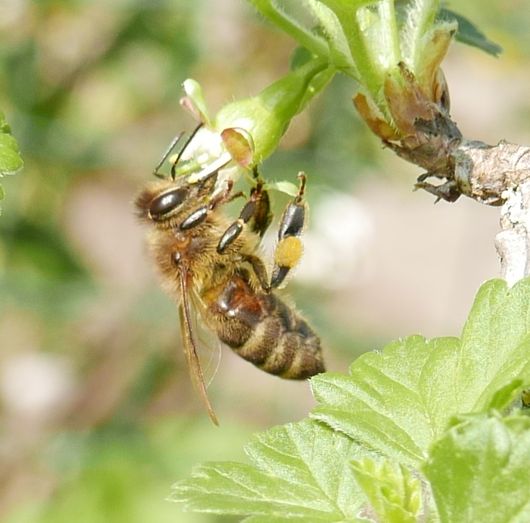
Large earth bumblebee (Bombus terrestris) visiting a black currant flower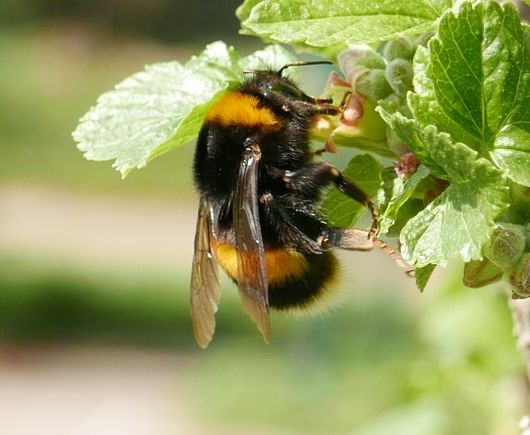
Tree bumblebee (Bombus hypnorum) visiting a black currant flower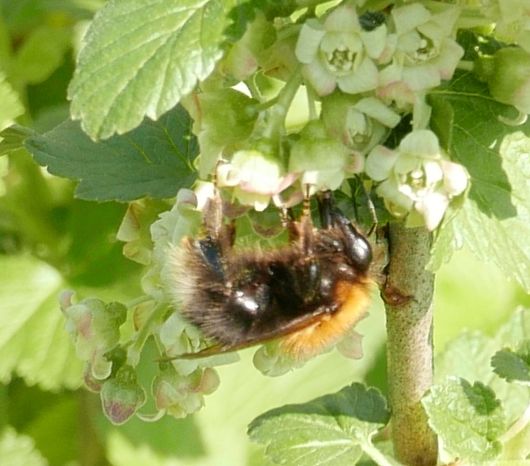
Red-tailed bumblebee (Bombus lapidarius) visinig a black currant flower
Ant (Formidae sp.) visiting a gooseberry flower